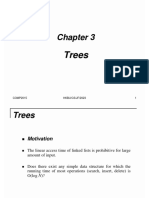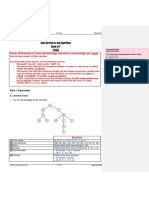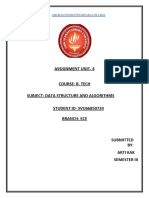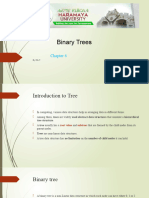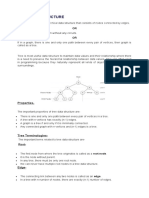0% found this document useful (0 votes)
73 views34 pagesBinary Trees (Part 1)
The document provides a comprehensive overview of binary trees, including definitions of key terminologies such as root, sibling, leaf, and internal nodes. It covers various properties and algorithms related to binary trees, such as checking if a binary tree is a binary search tree (BST), calculating the size and height of a tree, and finding the lowest common ancestor (LCA) of two nodes. Additionally, it includes methods for deleting a binary tree and converting it to its mirror image, along with code examples for each algorithm.
Uploaded by
Avirup RayCopyright
© © All Rights Reserved
We take content rights seriously. If you suspect this is your content, claim it here.
Available Formats
Download as DOCX, PDF, TXT or read online on Scribd
0% found this document useful (0 votes)
73 views34 pagesBinary Trees (Part 1)
The document provides a comprehensive overview of binary trees, including definitions of key terminologies such as root, sibling, leaf, and internal nodes. It covers various properties and algorithms related to binary trees, such as checking if a binary tree is a binary search tree (BST), calculating the size and height of a tree, and finding the lowest common ancestor (LCA) of two nodes. Additionally, it includes methods for deleting a binary tree and converting it to its mirror image, along with code examples for each algorithm.
Uploaded by
Avirup RayCopyright
© © All Rights Reserved
We take content rights seriously. If you suspect this is your content, claim it here.
Available Formats
Download as DOCX, PDF, TXT or read online on Scribd
/ 34
















